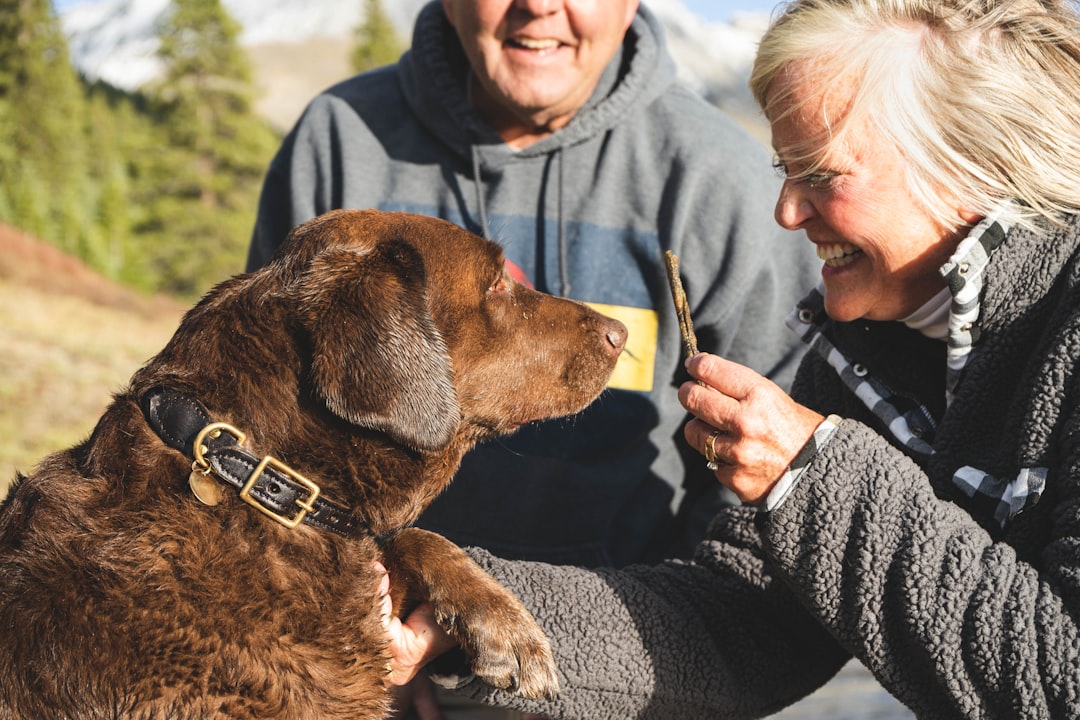When you watch your dog bounce with joy during playtime or curl up beside you on a difficult day, you’re witnessing the depth of their emotional world. Dogs experience feelings much like we do, with their own unique ways of processing happiness, fear, excitement, and stress. Yet many well-intentioned owners unknowingly develop habits that can chip away at their dog’s emotional wellbeing over time.
The beautiful thing about understanding these patterns is that awareness leads to change. Just like people, dogs are emotional beings who can suffer from sadness and even depression. Yes, dogs can experience depression, much like humans, due to shared brain chemistry, including similar neurochemicals and stress hormones. By recognizing the habits that might be causing emotional turbulence for our furry friends, we can create a more balanced and joyful life together.
Inconsistent Training and Mixed Messages

Picture this: one day you laugh when your dog jumps on the couch, the next day you scold them for the same behavior. Inconsistent or unpredictable human-dog interactions can cause emotional conflict in the dog, in which the dog might desire a relationship but does not trust that the interaction will be safe. This confusion creates a state of chronic uncertainty that wears down your dog’s confidence.
Dogs thrive on predictable patterns and clear expectations. When rules constantly shift, they develop anxiety about making decisions. As with many behavior problems in dogs, consistency is key. Dogs don’t misbehave to spite you – they’re trying to express unmet needs, stress, or confusion. They may become hesitant to engage naturally, always second-guessing whether their actions will be met with praise or punishment.
Overwhelming Social Isolation

Boredom, social isolation, and the absence of breed-specific activities can lead to frustration and emotional decline over time. While dogs need alone time just like we do, prolonged isolation can trigger deep emotional distress. Some owners believe letting their dog stay home all day is perfectly fine, especially if they have a yard.
Social fearfulness was associated with several factors, including urban environment, poor socialisation during puppyhood, infrequent participation in training and other activities, small body size, female sex, and neutering. These findings highlight the role of inadequate socialisation, inactivity, and urban living environmental in fear-related behavioural problems in dogs. Dogs are naturally social creatures who need interaction with both humans and other dogs to maintain emotional balance. Extended periods without meaningful social contact can lead to withdrawal, depression, and difficulty connecting with others later.
Using Fear-Based Training Methods

Dogs trained by compulsion, coercion, and force, behave through fear or pain and suffer more stress and anxiety than those taught using kind authoritative, play and reward-based methods that shape desired behaviours. Previous studies have shown that cortisol is released into the dog’s body through forced training. This approach might seem effective in the short term, but it comes at a steep emotional cost.
Repeated experiences of fear and emotional suppression can hurt dogs’ physical and emotional well-being and may lead to unpredictable, aggressive behaviour. When dogs learn through intimidation rather than trust, they develop chronic stress that affects their ability to form healthy relationships. Positive punishment should be avoided, because it can cause fear and anxiety toward the owner or fear of the situation and surrounding triggers.
Ignoring Their Natural Communication Signals

Your dog is constantly communicating their emotional state through body language, but many owners miss these subtle cues. When a dog licks their lips, yawns excessively, or turns their head away, they’re often expressing discomfort or stress. To differentiate stress signs from normal behavior, you must be familiar with your dog’s regular demeanor and pay attention to the context. That way, you can tell if they are licking their lips because they are anxious or because they want a treat.
Stressed behavior in dogs may be misinterpreted as excitement or poor training. Dogs may even be labeled as “bad” or punished for misbehaving, when in reality they are simply communicating feelings of discomfort. When we consistently misread or ignore these signals, dogs may escalate their communication through destructive behaviors or complete withdrawal. They lose faith that their attempts to communicate will be heard or understood.
Creating Unpredictable Daily Routines

Dogs are creatures of habit. They thrive on routine, familiarity, and a sense of stability in their environment. When something changes, it can have a big impact on your dog’s behavior. While spontaneity keeps life interesting for humans, dogs find comfort in predictable patterns. Feeding at wildly different times, inconsistent walk schedules, or constantly changing sleeping arrangements create underlying anxiety.
Research confirms that consistent daily patterns reduce anxiety and stress hormones in dogs, creating a foundation of emotional stability that makes them less susceptible to emotional contagion from occasional owner stress. Think of routine as your dog’s emotional anchor. When they know what to expect, they can relax into their day rather than remaining vigilant about what might happen next.
Emotional Dumping and Energy Transfer

Conversely, a dog cohabiting with high emotional tension may exhibit hyperactivity, reactivity, or withdrawal. This isn’t “bad behavior” – it’s behavior shaped by emotional proximity. Dogs are incredibly sensitive to our emotional states, often absorbing our stress, frustration, or anxiety without any filter. When we consistently bring high-stress energy into our interactions with our dogs, we’re unknowingly destabilizing their emotional world.
When you enter a room frustrated after a difficult day at work, your dog doesn’t just observe your behavior; they experience a physiological shift of their own. These findings highlight that dogs don’t just observe our emotional states – they experience them alongside us. This emotional contagion means that unmanaged human stress becomes dog stress. Your pup needs you to regulate your own emotions to help them maintain balance.
Lack of Mental Stimulation and Enrichment

Physical exercise alone isn’t enough to maintain emotional wellness in dogs. A lack of mental and physical stimulation can contribute to depression in dogs, especially when their exercise or enrichment needs go unmet. Dogs need mental challenges that engage their natural instincts and problem-solving abilities. Without this stimulation, they may develop behavioral issues that actually stem from emotional frustration.
No matter the physical space available at a shelter, dogs need physical and mental stimulation to keep them happy, improve their behavior, and help strengthen the bond with their human. Similar to play time, dedicating time to training and confidence building exercises helps improve behavior, reduce stress, and strengthen the relationship and trust between the owner and their dog. Mental enrichment isn’t a luxury – it’s essential for emotional stability.
Forcing Social Interactions and Overwhelming Experiences

Respect your dog’s pace of doing things, do not frustrate your pooch by overloading it with behavior training. Frustration can breed increased aggression or fear. Well-meaning owners sometimes push their dogs into social situations or environments before they’re ready. Whether it’s forcing interactions with other dogs, overwhelming them at busy events, or rushing through new experiences, this approach can create lasting emotional trauma.
In addition, urban areas, such as cities, may be very hectic and stressful environments to live as they are full of different stimuli, such as sudden and loud noises, potentially predisposing dogs to fear-related and other behavioural problems. Every dog has their own comfort zone and timeline for processing new experiences. Respecting these boundaries while gently expanding them builds confidence rather than fear. If your dog avoids interaction with other dogs or people, do not force the issue. Respect their choice.
Conclusion

Understanding these habits that damage emotional stability is the first step toward creating a more balanced, joyful life for your dog. Effective techniques to change unwanted behaviors in your pet include early intervention, patience, empathy, consistent training, proper exercise, environmental enrichment, and positive reinforcement. The wonderful news is that dogs are remarkably resilient and forgiving creatures who respond beautifully to positive changes in their environment.
Your dog’s emotional wellbeing is a reflection of the love, consistency, and understanding you provide. By avoiding these damaging habits and instead focusing on building trust, providing stability, and honoring their natural communication, you’re giving your furry friend the foundation they need to thrive emotionally. What changes do you think would make the biggest difference in your dog’s emotional life? We’d love to hear your thoughts in the comments.

Gargi from India has a Masters in History, and a Bachelor of Education. An animal lover, she is keen on crafting stories and creating content while pursuing a career in education.






